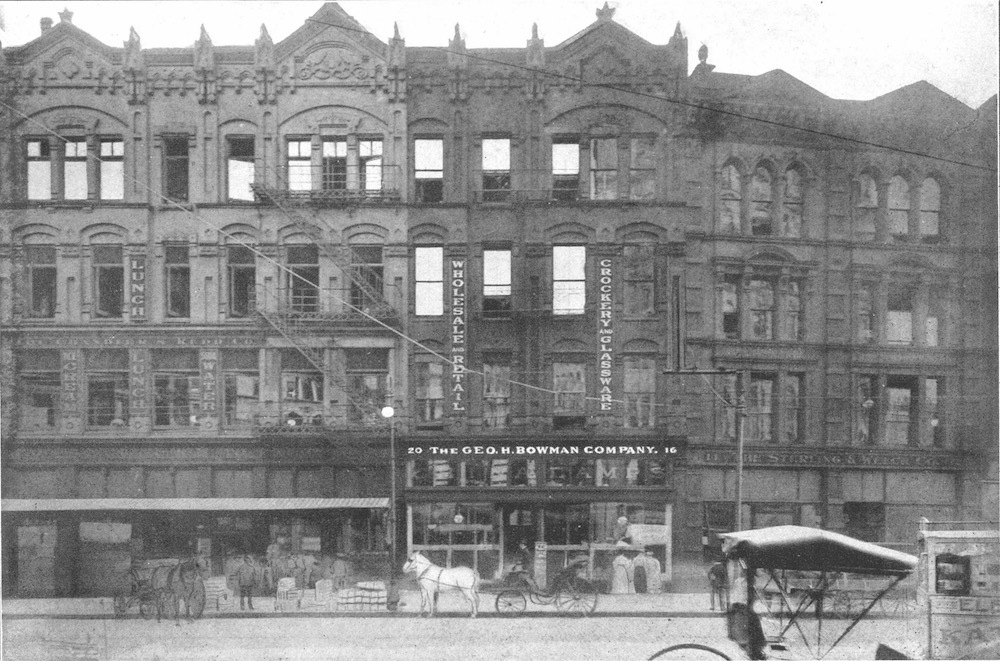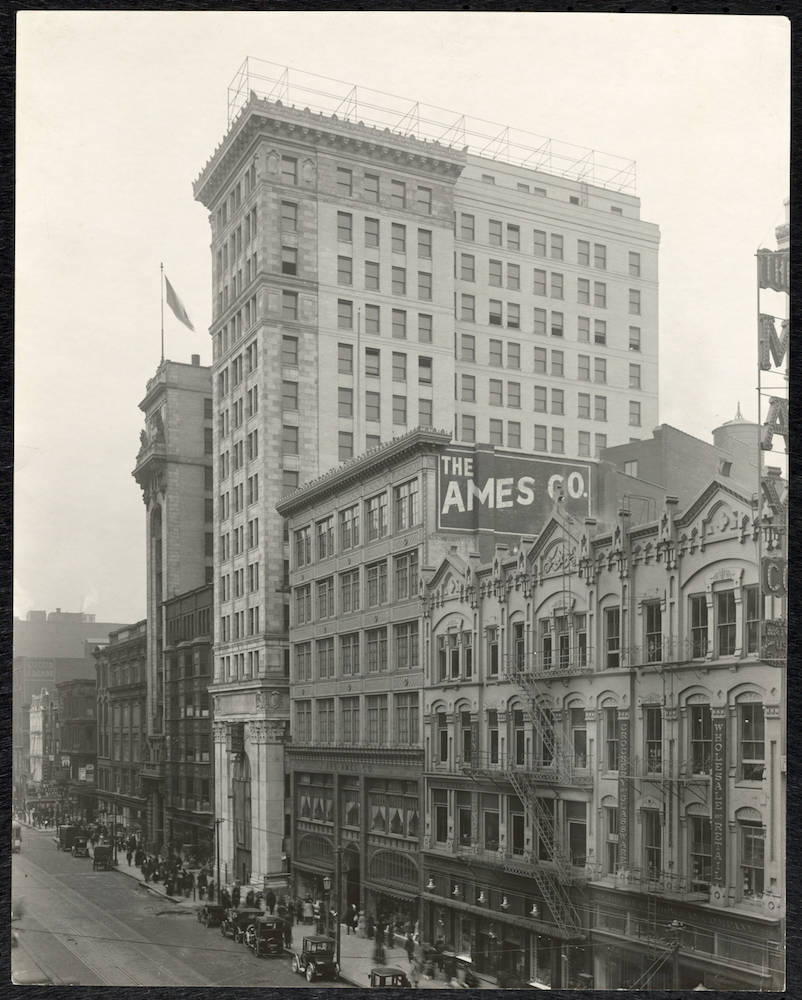
Though he has been called America’s first neurosurgeon, Dr. Harvey W. Cushing was not the first American to perform brain surgery. Others did before him, piercing the dura which encases the brain in order to attempt to remove tumors, but the results were almost always disastrous for the patient. With his pioneering use of local anesthesia, innovative methods to control bleeding and oxygen levels in the brain, and his skilled hands as chief surgeon at Johns Hopkins, Harvard and Yale University hospitals from 1896 to 1939, Harvey Cushing revolutionized the field, conducting highly successful operations and dramatically reducing the odds of patient mortality during such operations. One of his biographers compared Cushing's contributions in the field of neurosurgery to those of Sigmund Freud in psychiatry.
Harvey Cushing was born in Cleveland on April 8, 1869, in a house that sat on the site where the Cushing Building at 224 Euclid, built by his father, sits today. Harvey was a fourth-generation physician who knew and benefited from the experiences of both his father and grandfather, early leading medical practitioners here. Dr. Erastus Cushing, Harvey's grandfather, was born and grew up in Cheshire, Massachusetts, not far from the New York state line. He migrated to Cleveland in 1835, and in 1839 purchased a house on the south side of Public Square, east of Ontario Street, where the May Company building now sits. He and his family resided there, and he conducted his medical practice at that location, for the next three decades. Dr. Henry Kirke Cushing was the son of Erastus and the father of Harvey. Henry trained in Cleveland and Philadelphia to become a doctor, and entered into practice with his father in 1851. By 1860, he was married with children, and living just up the street from his parents in the house on Euclid Avenue where his son Harvey, the youngest of his 10 children, would be born nine years later.
While Cleveland had certainly changed from the time when Erastus Cushing arrived here in 1835 until the time when his Henry son moved into that house just up the street on Euclid Avenue in 1860, the south side of Public Square and lower Euclid Avenue (from the Square to East 9th Street) had remained essentially a residential neighborhood. That began to change during the Civil War and postwar period, when, as the Cleveland Leader put it in a March 10, 1870 article, business interests on Superior Avenue and Ontario Street “crept across the open space” of Public Square and began erecting commercial buildings on the south side of the Square and on both sides of Euclid Avenue. The Cushing family certainly contributed to that change. In 1868, the year his wife died, Erastus Cushing razed his house on the south side of the Square and built in its place the Cushing Block, a beautiful four-story brick building with Amherst sandstone ornamentation, designed by the architectural firm of Heard & Blythe and completed in 1869. One of the building’s first tenants was the Standard Oil Company, just recently founded by John D. Rockefeller. Erastus Cushing too was a tenant in the building, keeping a medical office there, while living as one of the "regular boarders" in the nearby Forest City Hotel on the west side of Public Square, where the Renaissance Cleveland Hotel sits today.
In 1873, Henry Cushing moved his family, including 4-year-old son Harvey, uptown to a new house on fashionable Prospect Avenue near Sterling (East 30th) Street. The following year he tore down his house on Euclid Avenue and put up in its place the Cushing Building, a four-story brick commercial building that in its architectural style very much resembled the building which his father had built five years earlier. The Cushing Building (which is only 36 feet wide, though 215 feet deep) was connected by a party wall to the wider Cobb Building, built at the same time, giving the appearance that the two were one larger building. (The Cobb Building was torn down in 1940 to make room for the new W. T. Grant store.) In addition to the Cushing Block and the Cushing and Cobb Buildings, two additional similarly-styled buildings--the Euclid Avenue Block and the Hardy Block--were erected in this period between what are today East 1st and East 3rd Streets, completing the transformation of that part of the south side of Public Square and lower Euclid Avenue from a residential to a commercial neighborhood.
Dr. Henry Cushing kept a medical office in the Cushing Building, as did other Cleveland physicians, from 1874 until his semi-retirement in 1893, the year his father Erastus died. He then turned occupancy of the entire building over to the George H. Bowman Co., an imported china and glassware store, pursuant to the terms of a 99-year lease. Harvey Cushing's share of the income from this and other long-term leases of downtown commercial properties owned by his father and the estate of his grandfather would be a major source of his income not only in his early years as a young physician, but even later when he was world-famous, yet paid only a modest salary by the university-owned hospitals that employed him.
The George H. Bowman store that took over occupancy of the Cushing Building in 1893 was a fixture on lower Euclid Avenue for the next four decades, but in 1932 it was forced to close its doors as a casualty of the Great Depression. The Cushing Building was afterwards leased by the Cushing family to several other retail businesses, and then in 1937 to the Coles Shoe Store which dramatically altered the appearance of the building by adding to its facade an art deco-style marble and granite stone covering. In 1948, Coles Shoes' parent company purchased the building from the Cushing family. The building was thereafter known as the Coles Building until 1983, when Baker Shoes replaced Coles Shoes. The building then became known as the Baker Building until 1997 when that shoe store closed.
Over the next several years, the Cushing Building sat vacant while a plan for the redevelopment of it and the nearby W. T. Grant Buildngs as an apartment complex materialized. According to city records, in 1999 the marble and granite art-deco covering was removed from the Cushing Building. In 2003, the redevelopment project was completed and the Cushing Building became a part of the new W. T. Grant Loft Apartments. Today, the upper floors of the Cushing building are luxury apartment lofts while the first floor is occupied by a restaurant. Clevelanders who walk past the building on their way from Public Square up Euclid Avenue can admire it as one of the last surviving examples of high Victorian Gothic architecture on lower Euclid Avenue, as well as the site of the birthplace of America's first neurosurgeon.
Images











